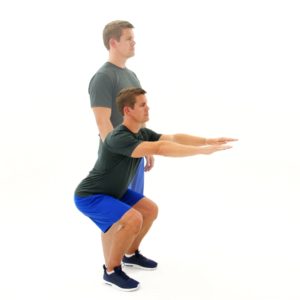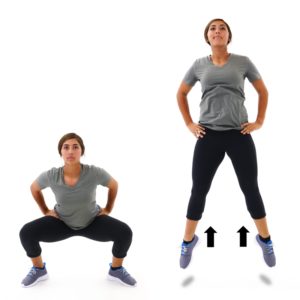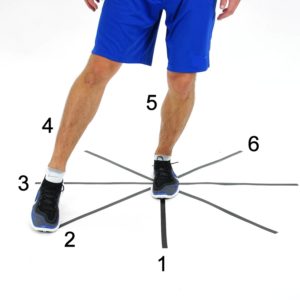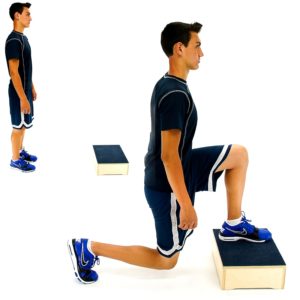Are you ski fit for this seasons winter break?
The ski season is upon us. The idea of skiing is tantalizing whilst you sit behind your computer at work, counting down the minutes until your holiday. You’ve paid for your trip, got all the gear and in theory you’re ready for the white, snow filled slopes. But are you ski fit?
Bliss… But before you go, there are few things you need to consider and I don’t mean just the condition of your skiing equipment or whether you’ve got this seasons style jacket!
- Are you ski fit?
- Are you fit enough to tackle the slopes from the first to the last day of your week?
- Can you confidently ski without pain from past injuries?
If you’re the type of skier who likes a leisurely ski down the blue (beginner’s) and red (intermediate) slopes, combined with frequent stops in the café; If you have done some form of exercise regularly throughout the year, then the answer is likely to be, yes.
Would you like to be a little more adventurous or you are returning to skiing after a long break? If your exercising has been sporadic throughout the year, then we at Head2Toe Physiotherapy would strongly advise you to improve your physical fitness.
Injury and Skiing
Some accidents cannot be prevented, (Knee Injuries Whilst Skiing) but many can. We can also try and reduce the risk of injuries. If you have any preexisting injuries, it is best to address them before you get your ski boots on.
By getting fitter you can improve your performance, comfort on the slopes and reduce fatigue which in turn can reduce the risk of injuries.
Ski Fitness
There is a lot to consider when it comes to your general fitness. In this blog post we will concentrate on specific strengthening exercises. In a perfect world you should probably aim to perform a 6 to 12-week training program depending on your starting level of overall fitness. However, as long as you take it slowly, doing something is better than doing nothing!
Muscle strength/ power
- Greater muscle strength can enhance sport performance, increase your speed, prolong performance and enhance change of direction during skiing.
- Muscle power is needed for fast and efficient movement. After the age of 30, you begin to lose 3% to 5% of your muscle mass over a decade.
- Take a look at some of the suggested exercises later on.
Cardiovascular fitness
- Training your cardiovascular system keeps your heart, lungs and soft tissue healthy so they are able to pump sufficient amounts of blood into your body/muscles.
- Larger muscles require more oxygen to work effectively over period of time for lasting performance.
- You’re most likely to be fatigued on your third day of your skiing trip. By then you have skied 4-6 hours over two consecutive days.
- To improve your cardiovascular fitness, you will have to try and perform 20 minutes to 1 hr aerobic exercises 3 times a week. That can be done by cycling, jogging (watch the knee loading) or cross trainer use.
- You should be warm but able to hold a conversation whilst performing this type of exercise.
Balance and flexibility
- Balance is used to maintain, achieve or restore upright posture during an activity.
- We need to be flexible enough to achieve the range of motion our joints need for skiing, without an injury to our joints or muscles.
Exercises
Warm up suggestions (5 minutes of any of the following)
- Jogging on the spot
- Side step jog
- Knees up jog
- Heels to bottom jog
- Can-can walk
- Squat jumps
Main Exercises
- 3 x 10-15 reps (possibly more/less depending on your fitness level).
- You should feel mildly fatigued after performing each exercise.
- Choose 4 exercises from the following and try to change the four you choose every so often.
- Squats: Double leg

- Jump squats

- Clock face single leg squats

- Sumo squats

- Lunges: either static, alternating or jump lunges

- Lateral hops over an object or onto a step and then over the step

All these exercises concentrate on your lower legs mainly but you shouldn’t forget about the rest of your body either. It’s well worth taking the time to work on some basic ski fit core, back and arm exercises too.
There are so many other useful exercises we could have selected, as well as variations of the above exercises. If you choose to see one of our Physiotherapists before planning your program, we will help you choose which exercises are best for you, based on your current level of fitness and any relevant bio mechanical factors. Come and visit us and we can help you to get ski fit for your holiday.
Have fun on the slopes!
If you are planning a ski trip away or would like some help knowing how to safely get fitter and stronger, please contact us.
All our Physiotherapists are highly qualified, experienced, with a variety of post graduate specialisations. If you or anyone you know would like to have a physiotherapy assessment with the team at Dorking , Leatherhead or Crawley , book online here or contact us here.
Blog post guest written by Viola Vajova and edited by Sam Bowden, Head2Toe Physiotherapist and Director at Head2Toe Dorking, Leatherhead, & Crawley Clinics.

Suchomel TJ, Nimphius S, Stone MH., The Importance of Muscular Strength in Athletic Performance. SportsMed.2016 Oct. ;46(10): 1419-49
Harvard Health Publishing, Harvard Medical School,Online publication; Trusted advice for healthier life. Preserve your muscle mass, 2016.
Current Issues in Flexibility Fitness.,DV Knudson, P Magnusson, M McHugh – President’s Council on Physical Fitness and Sport Research Digest, series 3n 10, June 2000 – ERIC
Pollock AS, Durward BR, Rowe PJ, Paul JP.Clin Rehabilitation.2000 Aug;14(4):402-6.What is balance?





